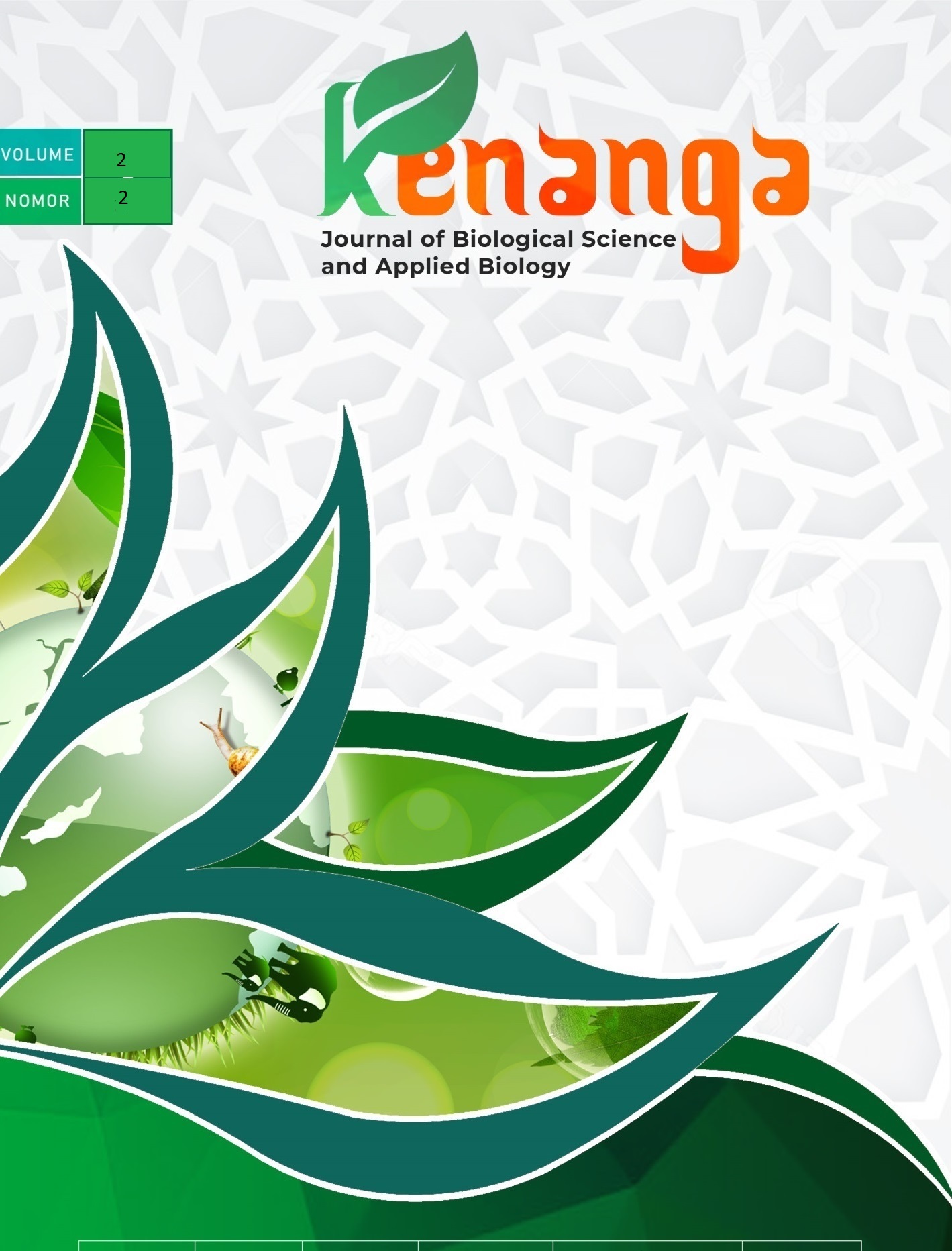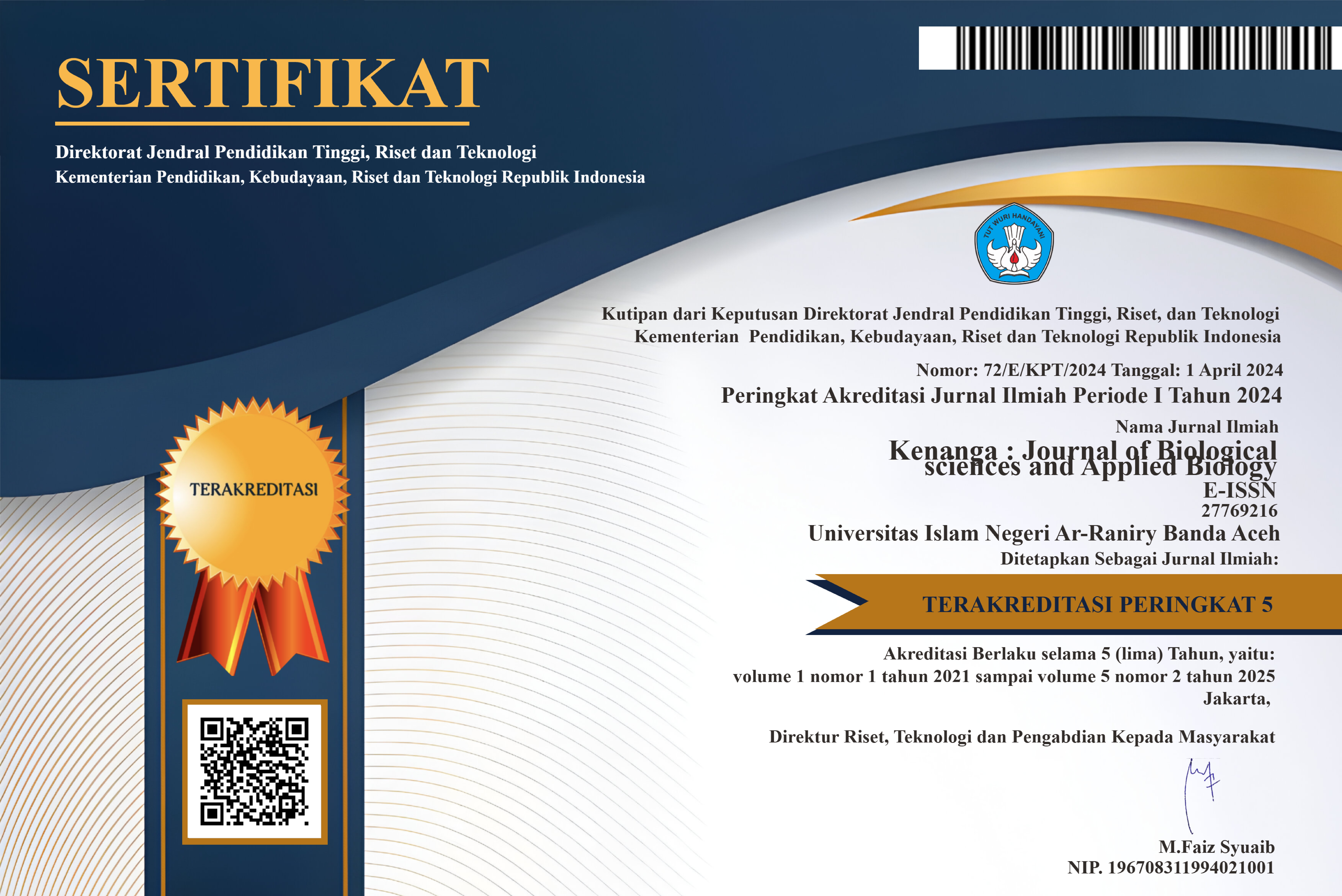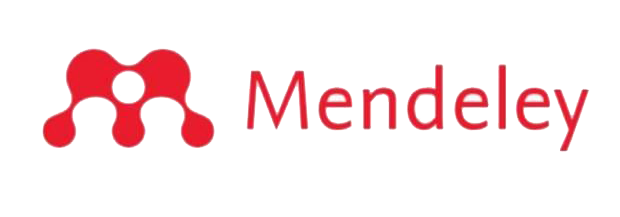AKTIVITAS KITOSAN LIMBAH CANGKANG KERANG BULU (Anadara antiquata) TERHADAP Aeromonas hydrophila PADA IKAN NILA (Oreochromis niloticus)
DOI:
https://doi.org/10.22373/kenanga.v2i2.3033Abstract
Aquaculture in Indonesia is carried out in freshwater, brackish and marine waters with limited production of several fish species such as tilapia. Although tilapia is easy to adapt to the environment, it can be infected with Aeromonas hydrophila bacteria. One of the efforts to treat bacteria is to use chitosan which is a chitin derivative that can be developed as an antimicrobial candidate because it contains lysozyme enzymes and aminopolysaccharide groups that can inhibit microbial growth. The purpose of this study was to determine the activity of chitosan from feather shell waste (Anadara antiquata) in inhibiting Aeromonas hydrophila in vitro and in vivo in tilapia. The methods used for the manufacture of chitosan include deproteination, demineralization, depigmentation, and deacetylation. In vitro testing was conducted to test the antibacterial activity using the disc diffusion method (Kirby-Bauer test). In vivo testing was carried out by the immersion method. The results showed that the chitosan yield was 77.2%. The most effective concentration of chitosan antibacterial activity against Aeromonas hydrophila was at 7% with an inhibition zone value of 6.85 mm. The results of data analysis showed that there was a significant difference between the test treatments. The in vivo test on tilapia showed that the highest percentage was found in the optimal concentration treatment (7% chitosan) with a value of 68.74%. The results of data analysis showed that there was no significant difference between optimal concentration treatment and positive control.























